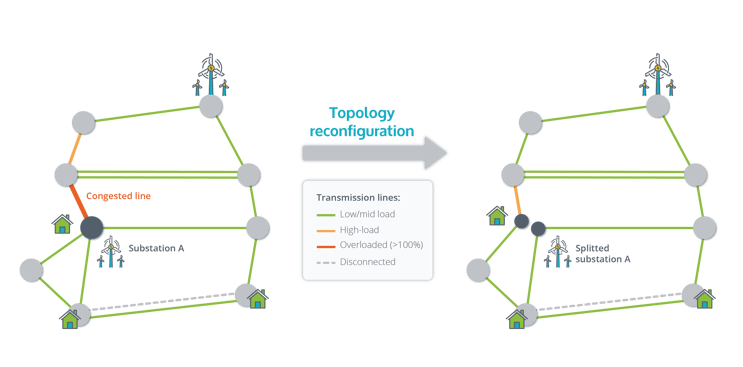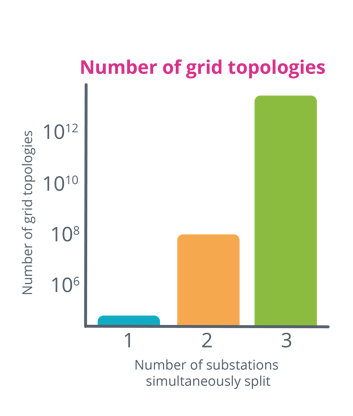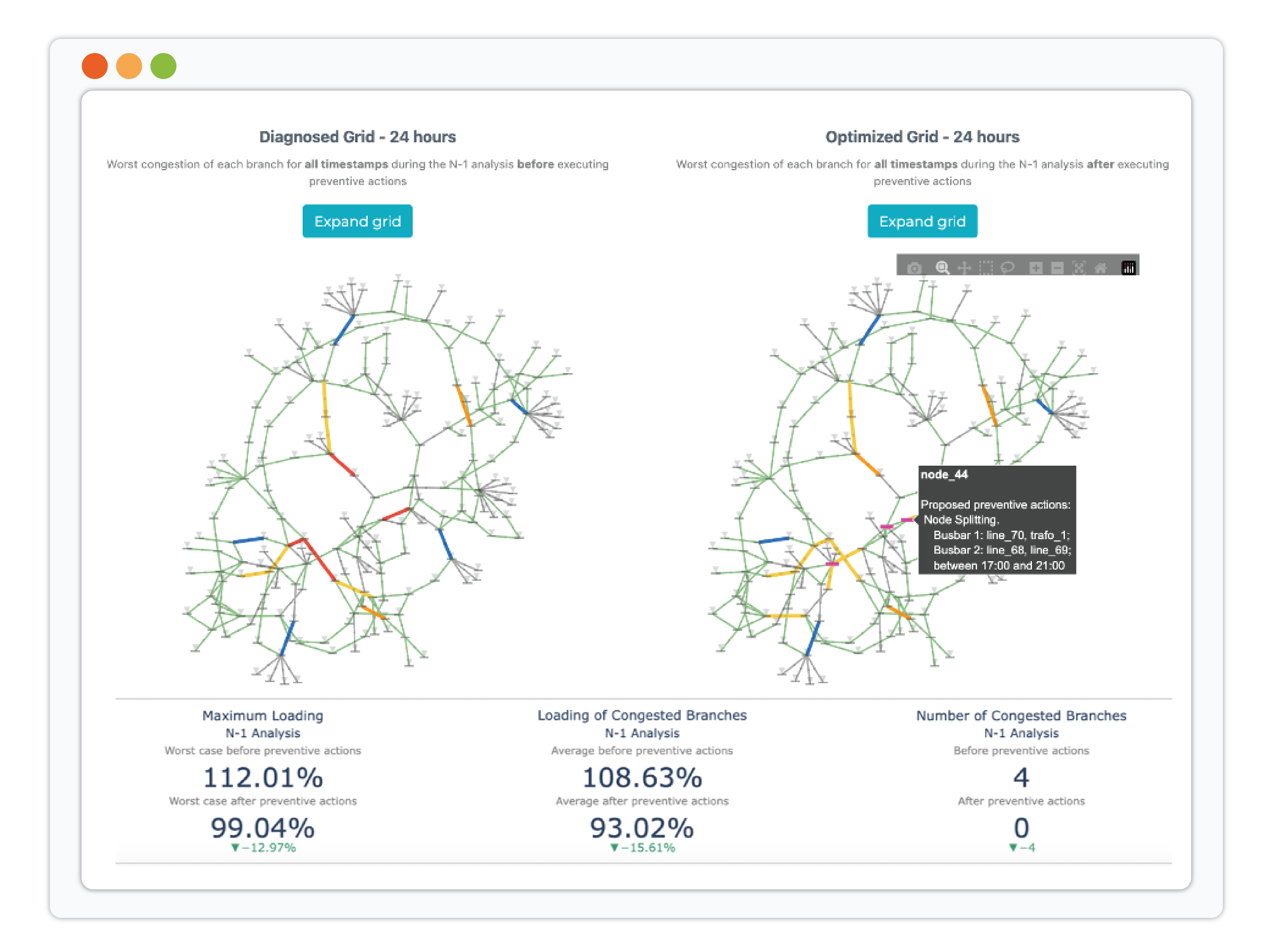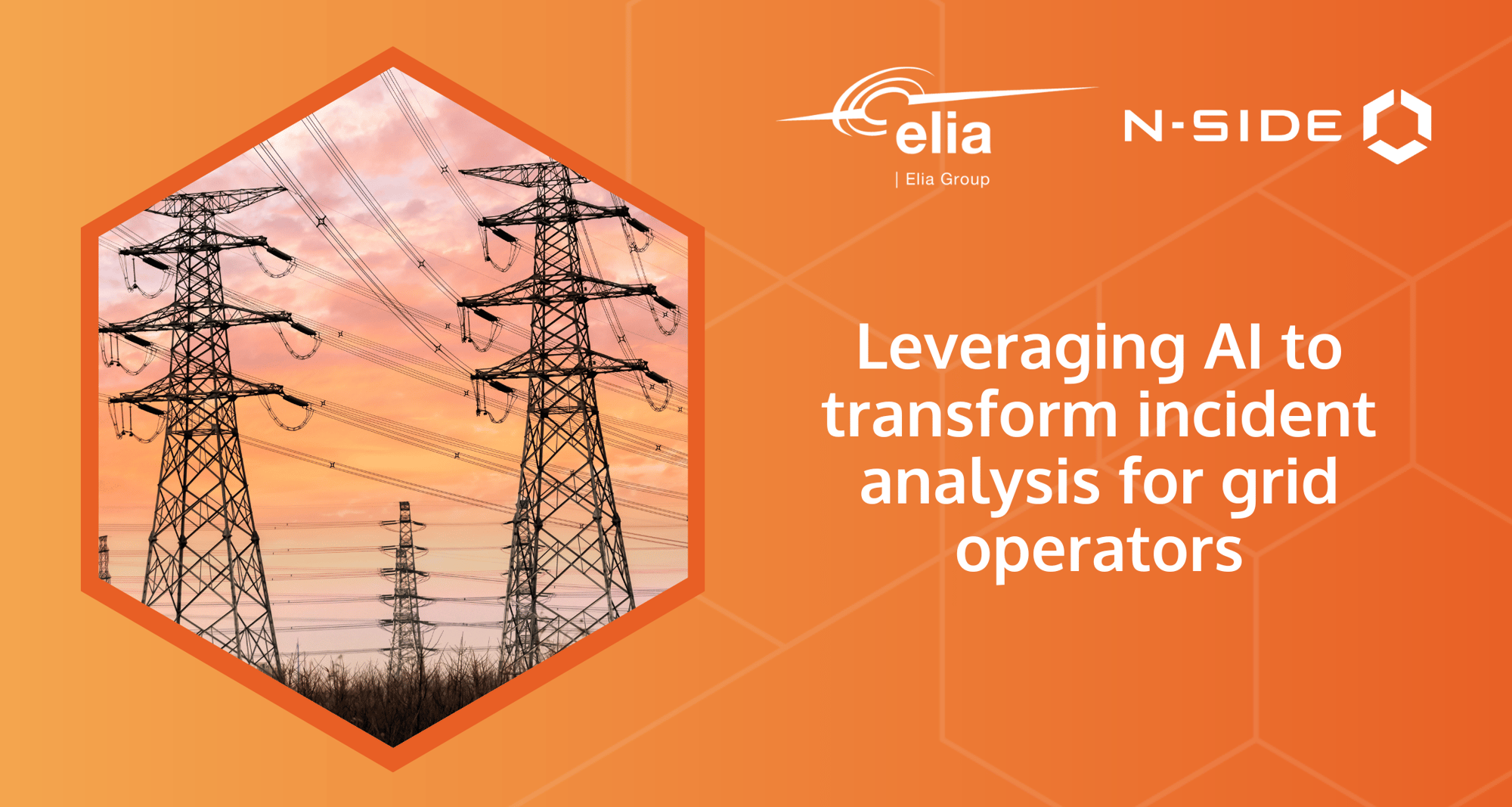Professional Services
Whether your challenge can be solved by our existing products or requires the development of new analytics solutions and market design approaches, our team is ready to help.
N-SIDE solves grid congestion

.jpg)
What is grid congestion, and why it becomes a growing concern for System Operators?
Solving grid congestion is a continuous challenge for Transmission System Operators (TSOs), who are responsible for developing, maintaining, and operating the high-voltage electricity grid. They play the crucial role of ensuring efficient electricity transmission from power generation to low-voltage distribution networks and major customers. To this end, solving network congestion problems is essential.
A grid congestion occurs when the current through a transmission line exceeds its maximum capacity, for example, due to high electricity demand during peak periods. In these cases, the transmission line is overloaded, which not only makes it less efficient because of the increasing Joule heating but can also create unacceptable sag of the transmission line. And worse than damaging equipment and the surroundings, congestion can also, when too severe, cause the line to fail and disconnect from the grid, leading to further congestion on other lines, cascading failures, and ultimately blackouts.
While grid congestion is not a new concern for TSOs, the risk of overloaded transmission lines tends to increase over time due to the current evolution of the electrical grid:
- Integration of more and more Renewable Energy Sources (RES) such as wind and solar energy: while they contribute to achieving decarbonization objectives, they also bring new challenges to the grid due to their intermittent, decentralized, and distributed nature.
- Increased electricity demand, notably due to industrial expansion and electrification of sectors like transportation and heating.
From long to short term, multiple ways of solving grid congestion exist, but they are not equally expensive
Over the long haul, TSOs can make long-term grid investments to anticipate potential congestion locations and adequately upgrade their infrastructure by constructing new transmission lines to increase the power capacity where it is most needed. To know more about it, we recommend you to read The innovative grid planning methodology behind FlexPlan Project: modelling and scenario framework.
In the shorter term, new transmission lines cannot be built to solve congestion, but other solutions exist to avoid overloading of the existing lines as much as possible. The remedial action (RA) means available to TSOs in grid operation notably include the following:
- Countertrading: cross-zonal exchange where a TSO buys power in another bidding zone to reduce the congestion level.
- Redispatch: by moving power generation from one production unit to another, TSOs can adjust power flows while keeping the balance between supply and demand. The overall generation capacity is maintained, but the resources are organized more efficiently.
- Load shedding: temporary reduction of electricity supply to consumers or industrial loads.
- Generation curtailment: temporary reduction of power produced by generators (often associated with RES).
- Energy storage: use of batteries to absorb or inject energy at critical locations during congestion and help maintain grid balance.
- Phase-Shift-Transformers (PSTs) tap changes: the tap changes of PST devices allow the adjustment of the phase angle between two nodes and hence control the power flows through specific transmission lines.
- HVDC setpoint changes: the setpoints of High-Voltage Direct Current links (HVDC) control the magnitude of power flow through the link and can hence route more power through the HVDC link, and relieve stress on other congested lines.
- Topology reconfiguration: by opening or closing circuit breakers connecting coupling busbars in their substations, TSOs can alter the connections at the substation and hence redirect the power flows to solve specific congestion problems. An illustrative example is given in Figure 1.
Among these possibilities, let us note that most often:
- Action means involving changes in energy generation, consumption, or exchange (such as countertrading, redispatch, curtailment, etc.) are generally expensive as they require power purchasing and/or compensation and coordination efforts. Therefore, they should be avoided or limited as much as possible. Load shedding and RES curtailment should also be avoided because of the disruptions and negative impacts on the consumers, as well as the reduced integration of RES.
- Topology reconfiguration, HVDC, and PST tap changes are less expensive as they can be performed with the existing infrastructure and do not require buying energy. Therefore, these are the action means to be favored even if, as we will see, finding the optimal reconfiguration settings entails solving an analytically complex problem.
Favouring low-cost action means such as topological reconfiguration is possible but analytically complex

Figure 1: Topology reconfiguration
Let us illustrate this complexity with topological actions. In transmission electricity networks, lines are interconnected with each other at substations. It is also through substations that generation is connected to the grid, and that voltage is lowered to interface with lower-voltage distribution networks or industrial loads. A substation can include several busbars (e.g., a double busbar configuration) which can be coupled or decoupled from each other. When those busbars are decoupled, they allow the substation to be electrically split, as illustrated in substation A of the right-hand drawing from Figure 1.
Considering substation A in the image above, which includes two busbars, four transmission lines, one generation connection point, and one consumption connection point, we can calculate a total of 26 = 64 potential topological re-configurations for this substation. Accounting for symmetry, we can subtract half of these configurations, leaving us with 32 distinct reconfigurations. As we extend this analysis to encompass all substations in the grid, it becomes evident that the number of different grid topologies grows exponentially with the number of substations that can be split, as illustrated in Figure 2.
Naturally, some configurations don’t make sense from an operational and/or power flow point of view. The huge number of configurations nevertheless represents a major obstacle for using common mathematical optimization techniques (such as Optimal Power Flow) to determine the optimal grid configuration for congestion reduction.

Figure 2: Number of potential grid topologies for a grid with 36 substations according to the number of substations simultaneously split.
(Source used The list of available environments from Grid2Op)
With its strong expertise in optimization, artificial intelligence, and power systems, N-SIDE can solve grid congestion at scale
After investigating several mathematical optimization and reinforcement learning approaches, N-SIDE has developed a decision-support software to reduce congestion using most of the above-mentioned action means. The algorithm can minimize overloads both in the base case and after N-1 contingencies, taking into account potential incidents such as a tree falling on a line and disconnecting it from the grid.

With day-ahead (preventive RA) or close-to-real-time capabilities (preventive and curative RA), the algorithm is robust to unprecedented topologies or load/generation profiles, and has a customizable objective function. Let us not forget the forward-looking capabilities (also called “time-coupling”): the algorithm can identify the best time to perform an action, anticipating future congestion and avoiding the back-and-forth on a single asset.
What are the secret ingredients? One of the algorithm's key strengths, among many others, lies in its strong advanced analytics, leveraging a state-of-the-art linearisation of the power flow equations. This approximation, faster than AC power flow but more accurate than the typical DC power flow, has the advantage of keeping track of both active and reactive power and allows many configurations to be filtered out from the initial set of topologies, hence breaking down the complexity of the problem. Furthermore, the algorithm learns on the fly and recycles knowledge from actions already tested in previous optimization runs. Ultimately, it also incorporates business constraints: this helps to further filter out solutions that might be technically feasible from power-flow perspectives, but impractical for the operator’s need.
A platform allows TSOs to test the algorithm with their data and visualize the results
On top of the algorithm, an easy-to-use demonstration application was built to better visualize the impact of applying the remedial actions suggested by the N-SIDE algorithm. The application displays the grid before (left hand) and after (right hand) optimization. Lines with congestion are recognizable in red, and hovering over them indicates the contingency leading to this congestion, if any. The proposed remedial action(s) are highlighted in pink, and more detailed information can be viewed by hovering over the action.
Finally, the demonstration application displays some Key Performance Indicators (KPIs), entirely customizable, to better quantify the impact of the proposed remedial action(s).

Figure 3: Demonstration app
And much more is to come
Core developments have intensified over the past few months, particularly in the context of the L2RPN AI Challenge for Energy transition organized by the Paris Region and RTE, the French TSO.
Throughout the competition, the N-SIDE team dedicated their efforts to the co-optimization of discrete and continuous actions, while keeping execution time fast enough to enable real-time use.
Stay tuned for upcoming articles where we will present the results and delve into the enhanced capabilities of the N-SIDE method!
Interested in testing our demonstrator application with your own data?



About the Author
Noémie holds a Master's degree in Computer Engineering from UCLouvain (Belgium) with a specialization in Artificial Intelligence. She works on industrial and R&D projects involving optimization and machine learning with applications in the energy domain, such as in power system operations.
Noémie Verstraete




Other content like this one...
.png)
Article
Tertiary Voltage Control Optimization: a successful demonstrator for decision support in the Control Room
About Transmission System Operators and Voltage Control. Transmission System Operators (TSOs) are responsible for ...
Read more
Article
Leveraging AI to transform incident analysis for grid operators
The energy industry is undergoing a significant transformation, with the integration of renewable energy sources, electrification of transport, and increasing digitalization of the grid.
Read more
Article
N-SIDE forecasts the imbalance risk in the Nordic power system
The solution will allow Nordic transmission systems operators to procure balancing reserves at the right time and the right volume.
Read more










